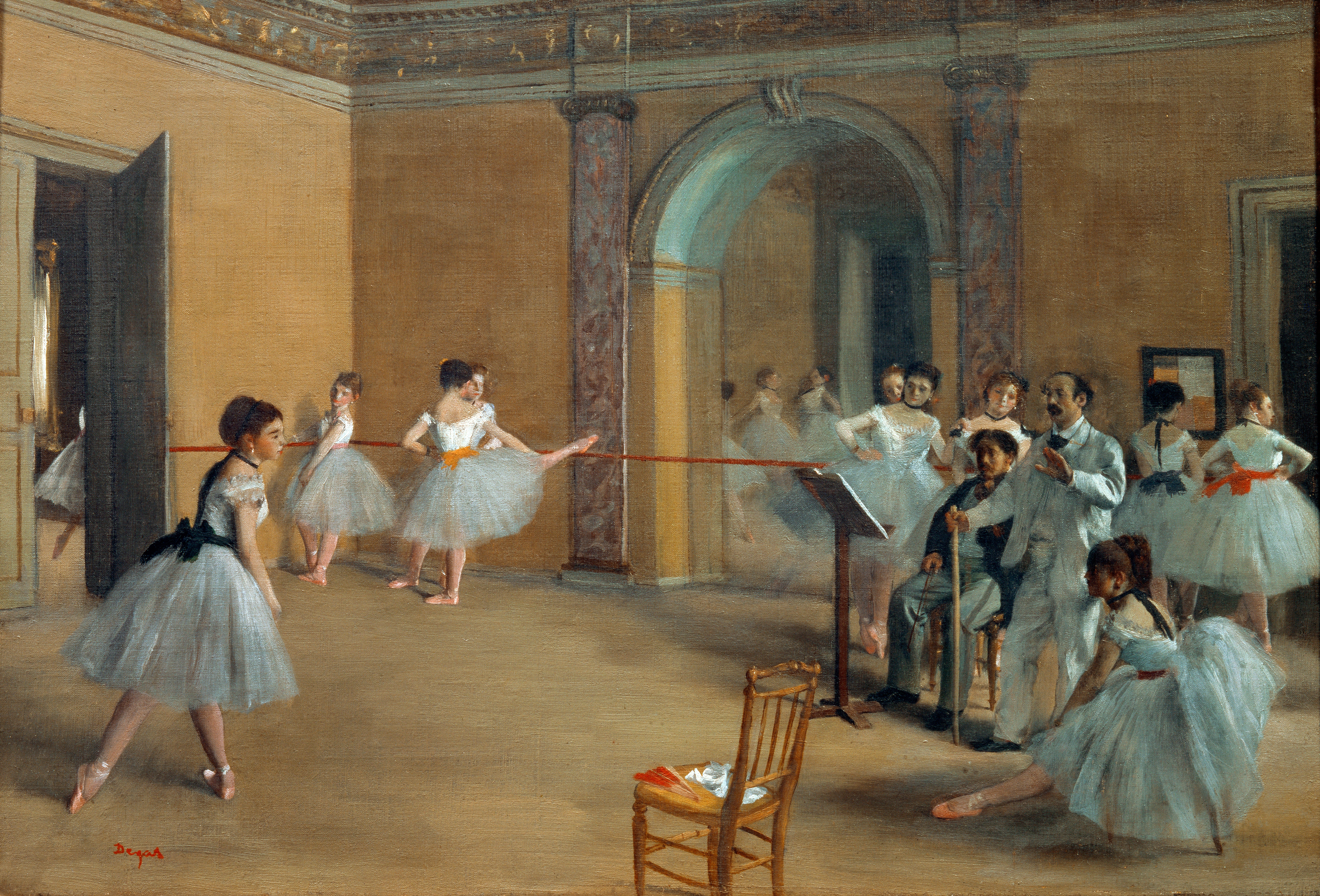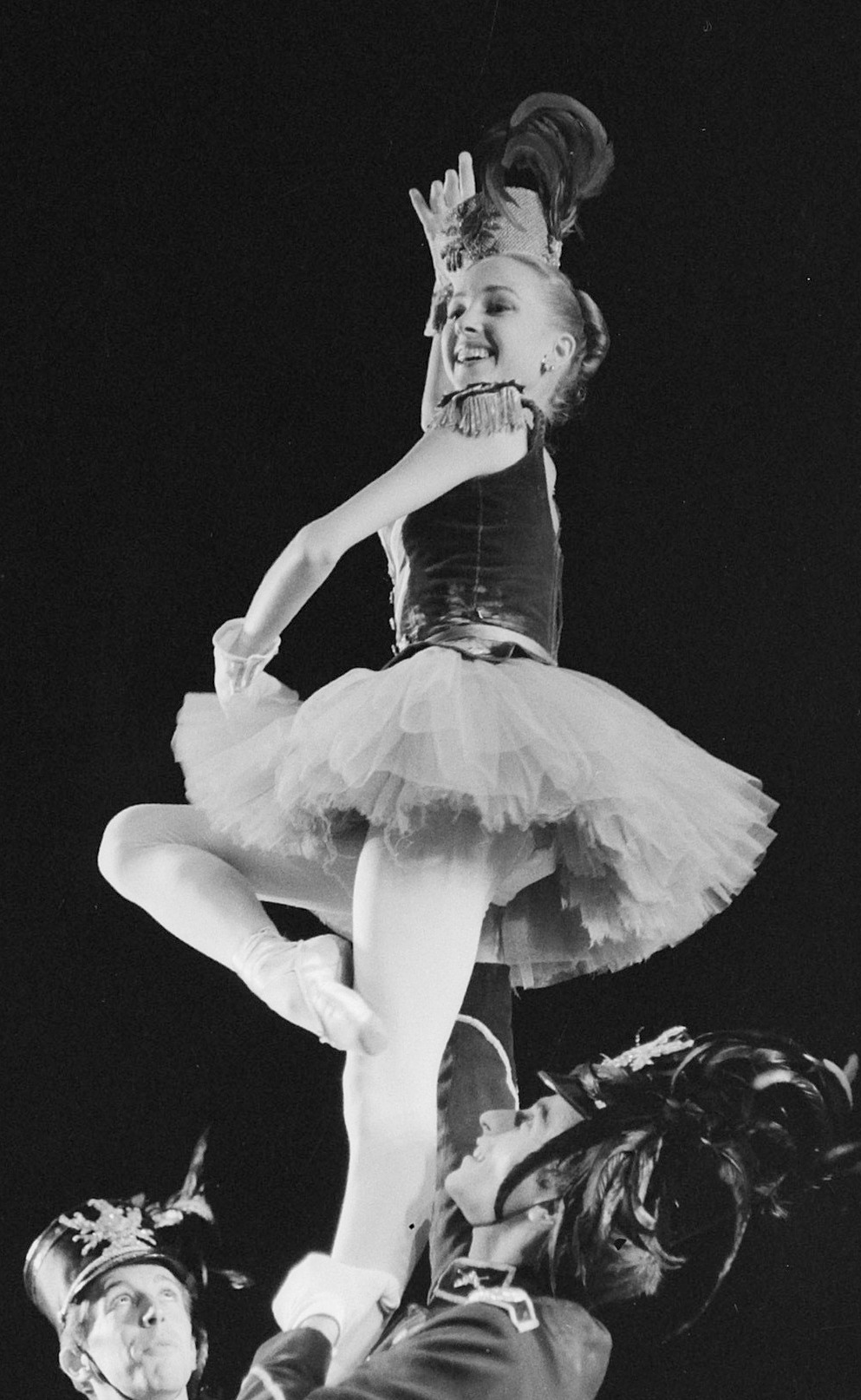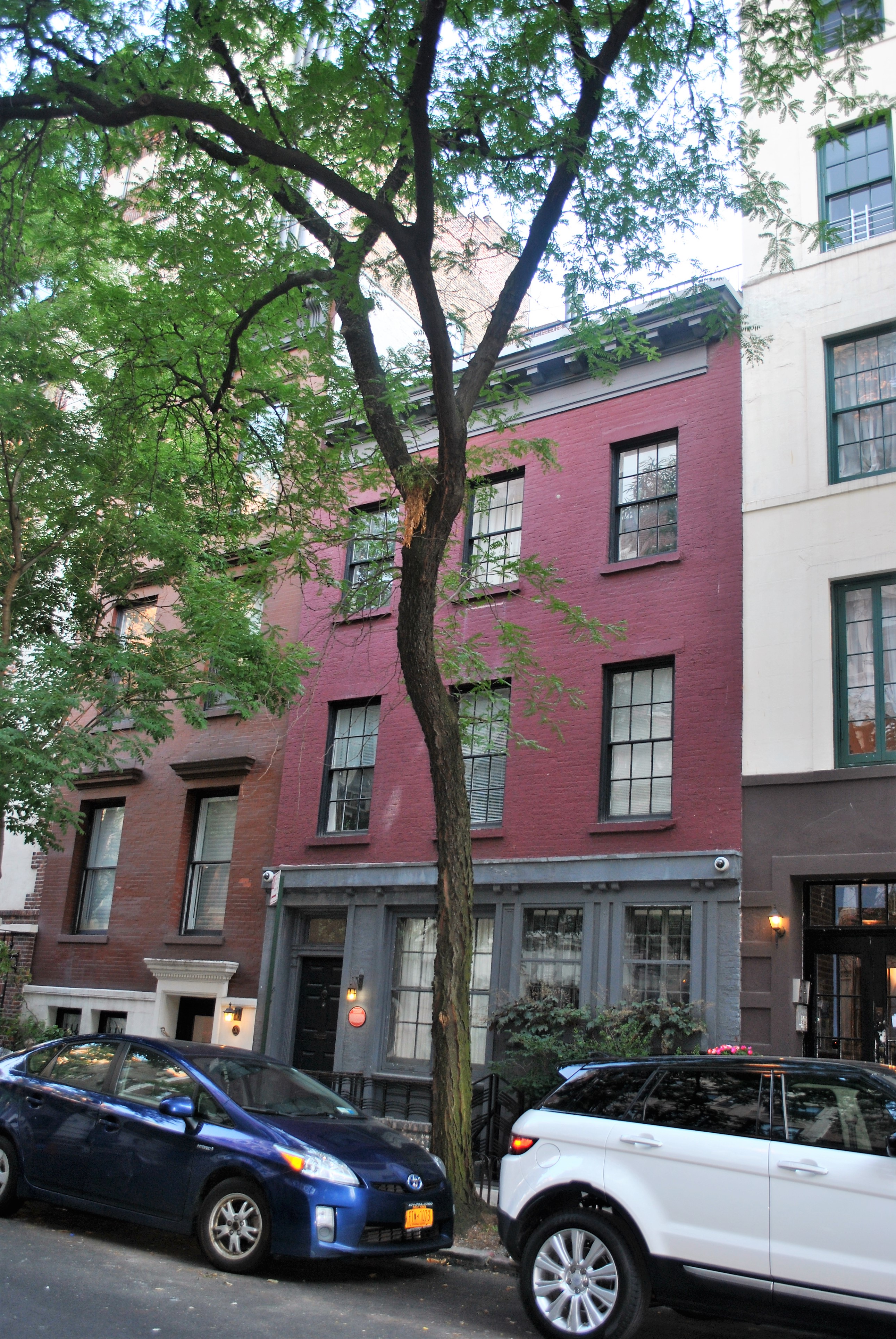|
Balanchine Technique
Balanchine technique or Balanchine method is the ballet performance style invented by dancer, choreographer, and teacher George Balanchine (1904–1983), and a trademark of the George Balanchine Foundation. It is used widely today in many of Balanchine's choreographic works. It is employed by ballet companies and taught in schools throughout North America, including the New York City Ballet and School of American Ballet, where it first emerged. History In 1924, Balanchine left the Soviet Union and joined Sergei Diaghilev's Ballets Russes in Paris as a choreographer and ballet master. After the death of Diaghilev in 1929, Lincoln Kirstein persuaded him to come to the United States in 1934. There, with Kirstein as his partner, he founded the School of American Ballet in New York City. During his time in Europe, Balanchine had begun to develop his neoclassical style, partially as a reaction to the Romantic anti-classicism that had led to increased theatricality in ballet. His ... [...More Info...] [...Related Items...] OR: [Wikipedia] [Google] [Baidu] |
Ballet
Ballet () is a type of performance dance that originated during the Italian Renaissance in the fifteenth century and later developed into a concert dance form in France and Russia. It has since become a widespread and highly technical form of dance with its own vocabulary. Ballet has been influential globally and has defined the foundational techniques which are used in many other dance genres and cultures. Various schools around the world have incorporated their own cultures. As a result, ballet has evolved in distinct ways. A ''ballet'' as a unified work comprises the choreography and music for a ballet production. Ballets are choreographed and performed by trained ballet dancers. Traditional classical ballets are usually performed with classical music accompaniment and use elaborate costumes and staging, whereas modern ballets are often performed in simple costumes and without elaborate sets or scenery. Etymology Ballet is a French word which had its origin in Italian ... [...More Info...] [...Related Items...] OR: [Wikipedia] [Google] [Baidu] |
Neoclassical Ballet
Neoclassical ballet is the style of 20th-century classical ballet exemplified by the works of George Balanchine. The term "neoclassical ballet" appears in the 1920s with Sergei Diaghilev's Ballets Russes, in response to the excesses of romanticism and post-romantic modernism. It draws on the advanced technique of 19th-century Russian Imperial dance, but strips it of its detailed narrative and heavy theatrical setting while retaining many key techniques, such as pointe technique. History and development Neoclassical ballet is a genre of dance that emerged in the 1920s and evolved throughout the 20th century. Artists of many disciplines in the early 1900s began to rebel against the overly dramatized style of the Romantic Period. As a result, art returned to a more simplistic style reminiscent of the Classical Period, except bolder, more assertive and free of distractions. This artistic trend came to be known as Neoclassicism. The ballet choreographer who most exemplified this ne ... [...More Info...] [...Related Items...] OR: [Wikipedia] [Google] [Baidu] |
Ballet Technique
Ballet technique is the foundational principles of body movement and form used in ballet. It is an important aspect of ballet performance because ballet (especially classical ballet) puts great emphasis on the method and execution of movement., pp. 6-7 & 21. The techniques found in classical ballet are a framework for many other styles of dance, including jazz and contemporary ballet. Aspects of ballet technique include alignment, which refers to keeping the head, shoulders, and hips vertically aligned. Turnout refers to completing movements with legs rotated outward; this promotes clean footwork, graceful ''port de bras'' (movement of the arms), and correct body positions, lines and angles. Other aspects of ballet technique include posture, toe pointing, keeping shoulders down, and pulling up, which combines proper posture and lifting of the muscles to increase turnout and enhance alignment and thus improve the quality of turns. Ballet technique is also used to exhibit '' ballon'' ... [...More Info...] [...Related Items...] OR: [Wikipedia] [Google] [Baidu] |
Merrill Brockway
Merrill La Monte Brockway (February 28, 1923 – May 2, 2013) was an American television producer known for producing the PBS television series ''Dance in America''. Biography Brockway was born on February 28, 1923, in New Carlisle, Indiana. He began playing piano at age seven, and served in the United States Army in Europe during World War II, when he drove for a chaplain and played music for the chaplain's services. After the war, he received his bachelor's and master's degrees from Columbia University. He became interested in dance after a Columbia classmate took him to see Martha Graham. Having graduated from Columbia, he worked as an accompanist for singers, including the soprano Patricia Neway. In 1953, Brockway joined WCAU and his first job was moving scenery for ''Action in the Afternoon''. Within a year, he was then promoted to director and worked on educational and children’s programs for CBS affiliates in Philadelphia and New York City. From 1967 to 1975, he directed ... [...More Info...] [...Related Items...] OR: [Wikipedia] [Google] [Baidu] |
Classical Ballet
Classical ballet is any of the traditional, formal styles of ballet that exclusively employ classical ballet technique. It is known for its aesthetics and rigorous technique (such as pointe work, turnout of the legs, and high extensions), its flowing, precise movements, and its ethereal qualities. There are stylistic variations related to an area or origin, which are denoted by classifications such as Russian ballet, French ballet, British ballet and Italian ballet. For example, Russian ballet features high extensions and dynamic turns, whereas Italian ballet tends to be more grounded, with a focus on fast, intricate footwork. Many of the stylistic variations are associated with specific training methods that have been named after their originators. Despite these variations, the performance and vocabulary of classical ballet are largely consistent throughout the world. History Ballet originated in the Italian Renaissance courts and was brought to France by Catherine de' M ... [...More Info...] [...Related Items...] OR: [Wikipedia] [Google] [Baidu] |
Arabesque (ballet Position)
Arabesque (; literally, "in Arabic fashion") in dance, particularly ballet, is a body position in which a dancer stands on one leg–the ''supporting'' leg–with the other leg–the ''working'' leg– turned out and extended behind the body, with both legs held straight. In classical ballet, an arabesque can be executed with the supporting leg ''en pointe'' or ''demi pointe'' or with foot flat on the floor. The working leg may touch the floor in ''tendu'' back – an ''arabesque par terre'' – or be elevated. Common elevation angles of the raised leg are 45° – ''à demi hauteur'' – and 90° – ''à la hauteur''. When the angle is much greater than 90° and the body trunk leans forward to counterbalance the working leg, the position is called ''arabesque penchée''. The arms may be held in various positions. Arabesques are described from the perspective of the dancer, in terms of the stage reference points used by the training system. ... [...More Info...] [...Related Items...] OR: [Wikipedia] [Google] [Baidu] |
Suki Schorer
Suki Schorer is an American ballet dancer, ballet mistress, teacher, and writer. She danced with George Balanchine's New York City Ballet from 1959 to 1972. Suki Schorer teaches at the School of American Ballet, the official school of the New York City Ballet and is a Balanchine Trust répétiteur. Biography Suki Schorer received her early professional training at the San Francisco Ballet School and joined the San Francisco Ballet in 1956. She continued her ballet studies with Lew Christensen as a member of the Company and also attended the University of California at Berkeley. In 1959, at the invitation of George Balanchine, she joined the New York City Ballet where she took his daily classes for over a decade. In 1968, she was made a principal dancer. Her repertory included principal roles in ''Apollo'', ''Serenade'', ''Concerto Barocco'', ''Symphony in C'', ''Ivesiana'', ''Stars and Stripes'', ''Tarantella'' and ''Jewels'' among others. Balanchine made solo roles on her in ''D ... [...More Info...] [...Related Items...] OR: [Wikipedia] [Google] [Baidu] |
New York City Ballet In Amsterdam, Repetitie New York City Ballet
New is an adjective referring to something recently made, discovered, or created. New or NEW may refer to: Music * New, singer of K-pop group The Boyz Albums and EPs * ''New'' (album), by Paul McCartney, 2013 * ''New'' (EP), by Regurgitator, 1995 Songs * "New" (Daya song), 2017 * "New" (Paul McCartney song), 2013 * "New" (No Doubt song), 1999 *"new", by Loona from '' Yves'', 2017 *"The New", by Interpol from ''Turn On the Bright Lights'', 2002 Acronyms * Net economic welfare, a proposed macroeconomic indicator * Net explosive weight, also known as net explosive quantity * Network of enlightened Women, a conservative university women's organization * Next Entertainment World, a South Korean film distribution company Identification codes * Nepal Bhasa language ISO 639 language code * New Century Financial Corporation (NYSE stock abbreviation) * Northeast Wrestling, a professional wrestling promotion in the northeastern United States Transport * New Orleans Lakefront Airp ... [...More Info...] [...Related Items...] OR: [Wikipedia] [Google] [Baidu] |
Lincoln Kirstein
Lincoln Edward Kirstein (May 4, 1907 – January 5, 1996) was an American writer, impresario, art connoisseur, philanthropist, and cultural figure in New York City, noted especially as co-founder of the New York City Ballet. He developed and sustained the company with his organizing ability and fundraising for more than four decades, serving as the company's general director from 1946 to 1989. According to the ''New York Times,'' he was "an expert in many fields", organizing art exhibits and lecture tours in the same years. Early life Kirstein was born in Rochester, New York, to Jewish parents, the son of Rose Stein and Louis E. Kirstein (1867–1942). His brother was George Kirstein, his sister was Mina Kirstein and his paternal grandparents were Jeanette (née Leiter) and Edward Kirstein, a successful Rochester clothing manufacturer who ran E. Kirstein and Sons, Company. He grew up in a wealthy, Jewish, Bostonian family and attended the private Berkshire School, along with Geo ... [...More Info...] [...Related Items...] OR: [Wikipedia] [Google] [Baidu] |
George Balanchine
George Balanchine (; Various sources: * * * * born Georgiy Melitonovich Balanchivadze; ka, გიორგი მელიტონის ძე ბალანჩივაძე; January 22, 1904 (O. S. January 9) – April 30, 1983) was an ethnic Georgian American ballet choreographer who was one of the most influential 20th-century choreographers. Styled as the father of American ballet, he co-founded the New York City Ballet and remained its artistic director for more than 35 years.Joseph Horowitz (2008)''Artists in Exile: How Refugees from 20th-century War and Revolution Transformed the American Performing Arts.''HarperCollins. His choreography is characterized by plotless ballets with minimal costume and décor, performed to classical and neoclassical music. Born in St. Petersburg, Balanchine took the standards and technique from his time at the Imperial Ballet School and fused it with other schools of movement that he had adopted during his tenure on Broadway and in ... [...More Info...] [...Related Items...] OR: [Wikipedia] [Google] [Baidu] |
Ballets Russes
The Ballets Russes () was an itinerant ballet company begun in Paris that performed between 1909 and 1929 throughout Europe and on tours to North and South America. The company never performed in Russia, where the Revolution disrupted society. After its initial Paris season, the company had no formal ties there. Originally conceived by impresario Sergei Diaghilev, the Ballets Russes is widely regarded as the most influential ballet company of the 20th century, in part because it promoted ground-breaking artistic collaborations among young choreographers, composers, designers, and dancers, all at the forefront of their several fields. Diaghilev commissioned works from composers such as Igor Stravinsky, Claude Debussy, Sergei Prokofiev, Erik Satie, and Maurice Ravel, artists such as Vasily Kandinsky, Alexandre Benois, Pablo Picasso, and Henri Matisse, and costume designers Léon Bakst and Coco Chanel. The company's productions created a huge sensation, completely reinvigorat ... [...More Info...] [...Related Items...] OR: [Wikipedia] [Google] [Baidu] |






.jpg)
